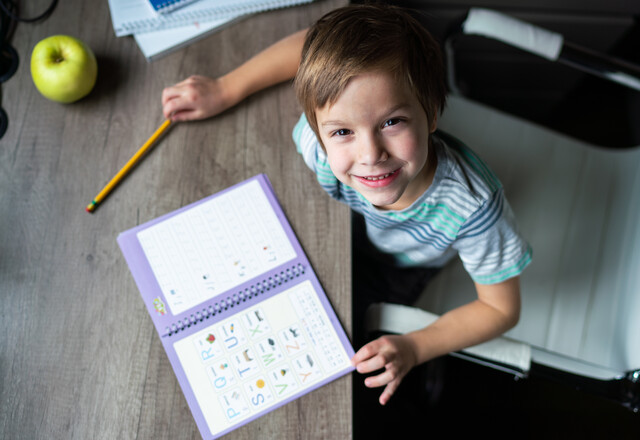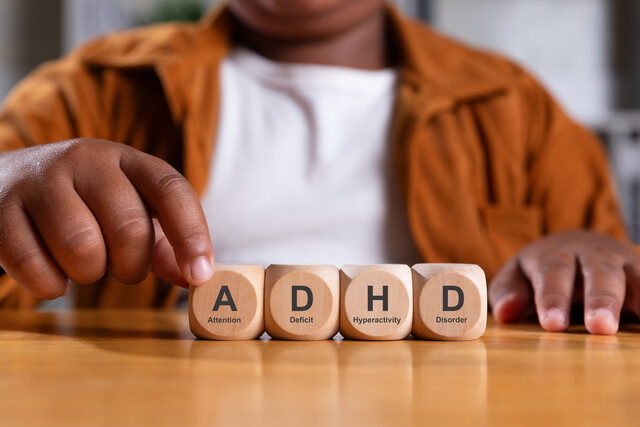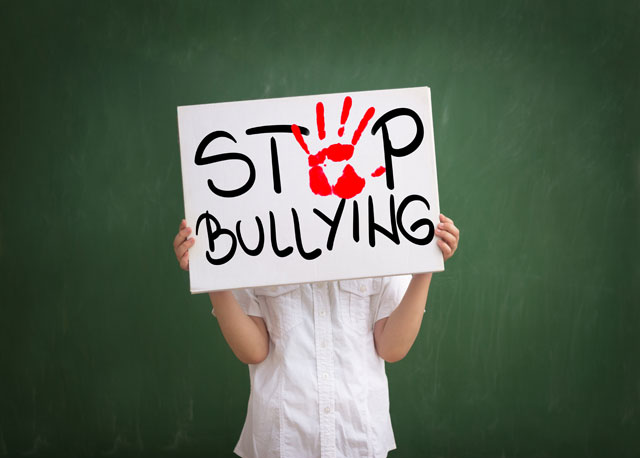For this article, we are going to turn the focus on the bully, so that we can gain a better understanding of which typically does the bullying, and why they engage in such behaviors. The more we can understand the person who engages in bullying, the more successful we likely will be at ending the serious problem that is plaguing schools and playgrounds around the country.
It would be nice if there were just one set of characteristics that made up a bully. It would sure make it a lot easier to pick out him or her. If we could do that, we could quickly zero in on the bully and interject before things can become a problem. However, there is no one clear cut set of characteristics or look that fits a bully. Bullies come in many shapes, sizes, ages, and personalities. Some kids who you would never think of as a bully, others may become a bully when around other kids who are bullies.
It is important to keep in mind that any child can potentially be the bully. No parent wants to get the phone call or notice sent home that there child is bullying another, and it may even come as a shock. Nevertheless, with so much bullying going on, it is someone's child who is the aggressor in all of this.
The more you can identify why a bully is engaging in such behaviors, the better off you will be in trying to diffuse the situation. Some bullies have not been shown a lot of love, care, or are hurting inside, which is part of why they project their feelings onto others through their bullying tactics. Some bullies are also more likely to be depressed, as well as have a higher suicide risk. They are often, quite simply, children who are hurting inside and do not know the appropriate way to address those feelings and make things better.
Did you know?
Unfortunately, students are not the only ones who engage in bullying behaviors at school. There have been numerous reports of teachers and other school administrators engaging in bullying behaviors toward children, such as the case with Stuart Chaifetz, a New Jersey dad who suspected his autistic son was experiencing problems at school. With the son unable to tell him what was going on, dad put a hidden recorder on his son and sent him to school. What he later heard on the recorder was incidents of his son being bullied and called names by school staff members.
- In 2010, the American Psychological Association published information that reported that those children and adolescents who lack social problem solving skills are more likely to be bullies, as well as become victims. They also reported that children who are struggling academically are also more likely to become bullies.
- The same study also found that bullies tend to have negative attitudes and beliefs about others, as well as themselves, and that bullies tend to come from family environments that are characterized by poor parenting and conflict, and perceive school negatively.
- The most predominant characteristic of a bully, reported in the same study as above, found that it is poor academic performance above anything else. The study also found that the younger bullies tend to be more defiant, aggressive, and disruptive, while those bullies who are older tend to be more anxious, withdrawn, and depressed.
- While some research has shown that bullies are more likely to be social outcasts, other studies, such as the one published in the March/April 2010 issue of Child Development found that many bullies are actually considered to be popular. What their research found is that many popular kids in school turn to bullying and picking on kids in an effort to boost their social standing among their peers. In other words, many popular kids pick on other kids to try to impress their peers and become even more popular.
- Additionally, that study reported that bullies are not exactly to be loved, but they are looking to be noticed. So many bullies, especially those who are popular, engage in bullying behaviors in an effort to get attention from their peers.
- In a February 2011 research study published in the American Sociological Review, researchers found that mean kids bully simply because they can. The study found that the popular middle and high school students become, the more they engage in aggressive behavior. They found that a higher social status increased aggression, until students reach the top 2 percent of the school's social hierarchy. Those students at the top and bottom 2 percent of the school's social hierarchy tend to become less aggressive once they get to that level.
- The same study found that those students who witnessed bullying either gave it approval or encouraged it, thus giving the bully their more popular status.
Research also suggests that both genders engage in bullying, so while there are some stereotypes that people hear about it being mostly girls or mostly boys who do it, the research does not support it. Both boys and girls engage in bullying behaviors.
If the research that has been done on bullying shows anything, it demonstrates that bullies can be anyone, really. On one end of the spectrum, there are bullies who have difficult home lives and who suffer from low self-esteem. They are often going about handling their emotions in a negative and unhealthy way, using bullying. However, additional research has demonstrated that children on the complete opposite end of the spectrum are also engaging in bullying. Many children and adolescents are popular and have high self-esteem, who are being bullies.
The point in showing research from both ends of the spectrum is not to create confusion about whom bullies are and why they do it. The idea is to ensure that those studying bullying realize that bullies really do come in a variety of forms and that we cannot stereotype and say that a bully is this and that. Anyone can be a bully, unfortunately. Those who will be working with schools, organizations, and trying to raise bullying awareness, and end it, need to understand this important information about those who bully, really to make a meaningful difference.
Dealing with Bullies
It would be nice to say that all children know it is not right to engage in bullying behavior and therefore would not do it. Judging by what we have come to know about bullying by now, that is not exactly the case. There is a good chance that most children and adolescents already know that bullying is not right, yet they still engage in it. Simply telling a child that bullying is not a nice thing to do is not going to work to bring it to an end. Doing that is almost like telling a child that the sky is blue or we breathe oxygen. They usually know it is wrong.
So what is a teacher, parent, or community supposed to do to help prevent and end it. That is what we will explore in this article; the various ways that experts believe are the most effective routes to dealing with bullying and successful bullying prevention.
Since bullying has become such an issue across the country, there are many communities and schools that are taking a preventative approach to tackling bullying. To do this, adults are teaching children from a young age what bullying looks like and how they should handle it if it happens. The best way for a child to handle bullying is to stand up to a bully. If you recall from the beginning, bullying happens when the bully believes he or she is picking on someone who is weaker than they are. When the child stands up to the bully, they will help to curb the problem right then. No longer will the bully believe that the other person is weaker.
It takes a lot of courage and confidence for a child to stand up to a bully, yet it is the most effective way to help end the bullying. That does not mean to throw a punch or escalate it to violence. However, it does mean that the child needs to learn to look a bully in the eye, and confidently tell them to stop what they are doing, either in a serious or humorous manner. Standing up to the bully will let them know that the child is not weak and is not going to sit there with their head down, taking the insults.
Children need to learn that it is important in life to stand up for themselves, whether they are in elementary school or beyond. If standing up to the bully does not work, then children should be taught simply to walk away and not to show emotion over it. A bully will pick on another person only when they keep getting a response out of the person. If they fail to respond to their antics, then they lose interest and are likely to move on to someone that will respond to them.
Adults can role play bullying scenes and positive ways to handle the situation, so that kids are prepared on how to handle it when and if it happens. It is also a good idea to talk to kids about various ways that they can stay safe, such as staying near adults, or playing in groups of other kids. Also, children should be taught to stick up for other kids when there is bullying taking place, which they can do by getting help or joining the child being bullied, so they do not appear to be alone.
To be able to intervene when bullying is taking place, adults need first to know that it is going on. Every bullying prevention program should include teaching children to let adults know about the issue. Whether it is happening to them, or to someone they know, if they can speak with some trusted adults they will have an easier time intervening to bring the bullying to an end.
When someone has been identified as being a bully, it is crucial that the school administrators have a serious discussion with the child who is doing the bullying, as well as with their parents. Trying to find the underlying cause of why a child is engaging in bullying behavior is helpful to end it. Once there has been an attempt to diffuse the situation through discussions and addressing any underlying problems, if it continues, schools need to follow through with the discipline guidelines that they set forth in their prevention program.
Schools across the nation are largely taking bullying serious. In doing so, they are creating bullying prevention programs, as well as setting bullying policies and rules that need to be followed. Doing this is a big part of helping to keep bullying out of schools, so long as there is a consequence when bullying is reported and found to be happening.
- Taking prevention measures so that children are taught that bullying is not acceptable, what it looks like, and how to react to it.
- Rules and policies regarding bullying are put into place, keeping in accordance with state laws.
- The rules and policies are incorporated into the school's culture and day-to-day functions.
- Children are held accountable for following the rules that have been established.
- Schools also need to establish a simple reporting system, so that students will feel comfortable reporting the bullying, and so that records on bullying offenses can be maintained in a private manner.
There is help that both bullies and the victims can get that can help them move past the bullying, as well as learn how to better use communication tools. Both may benefit from social skills training exercises. Those being bullied can benefit from learning how to be more assertive and confident in communicating their needs, while bullies can use social skills training to learn how to better elicit positive responses from peers. Both can benefit from learning friendship making skills, so that they can make friends and feel more accepted.
Children can also benefit from learning anger management skills, so that they know appropriate ways to deal with their anger. If there is an ongoing problem with a child being a bully, or being bullied, the child may also benefit from speaking with a professional counselor or psychologist, especially if it appears that they may be depressed or having suicidal thoughts.
Another important aspect is that children learn from adults, so it is important for adults to set a good example. In doing so, they demonstrate that they are kind to others, have things they enjoy doing, and help their friends when they need it.


























